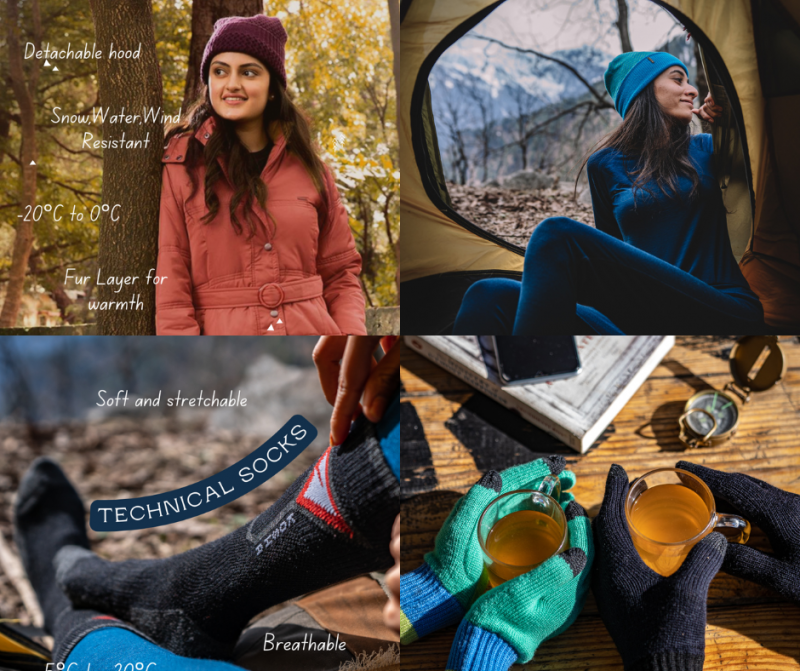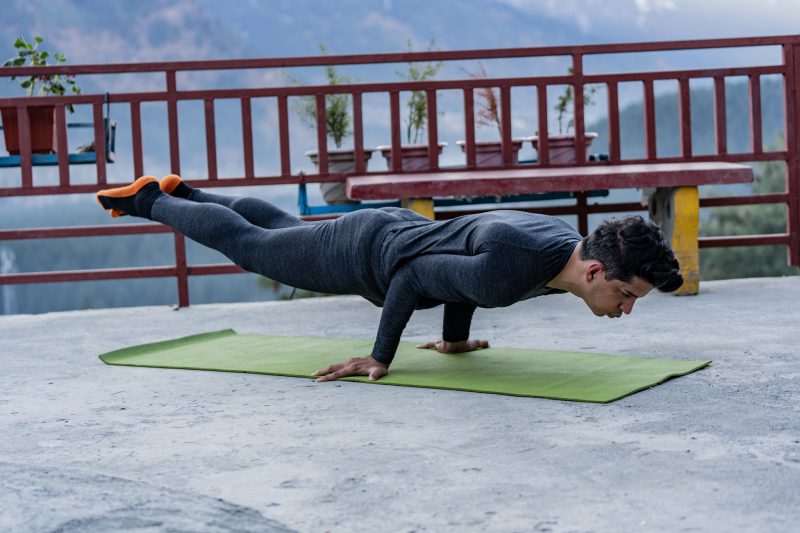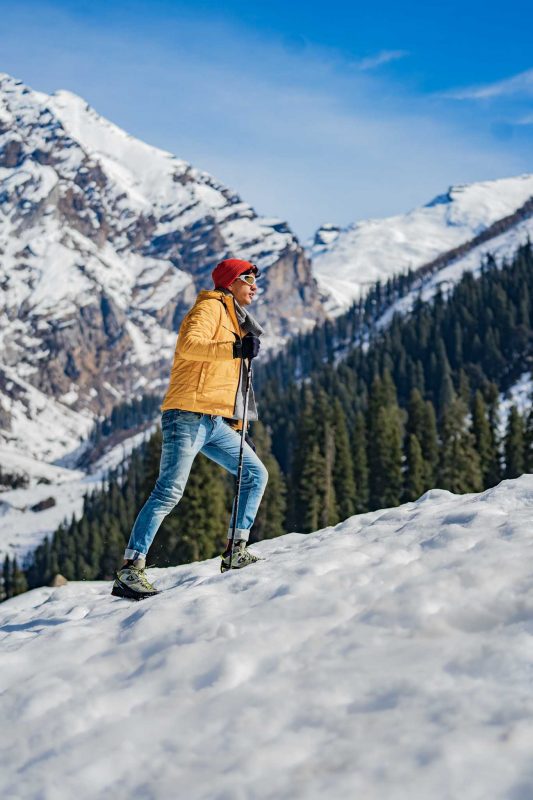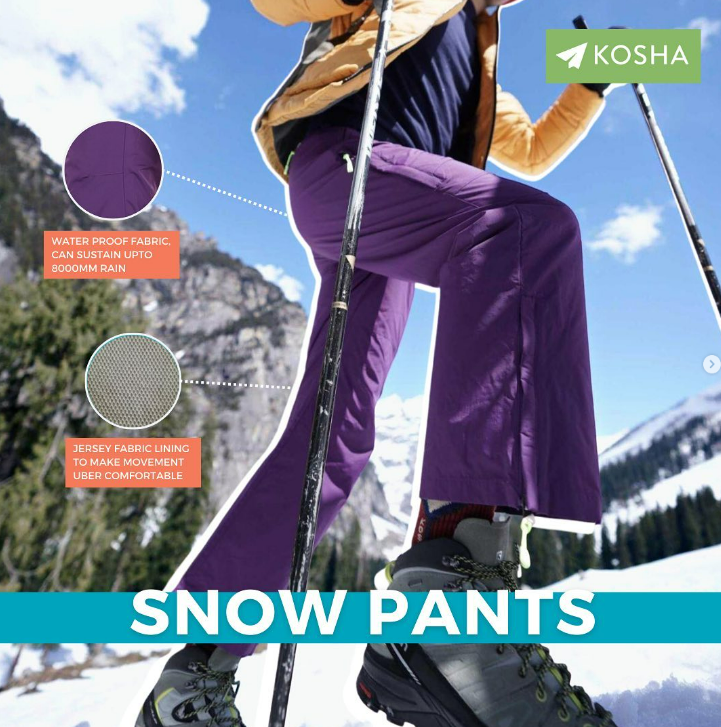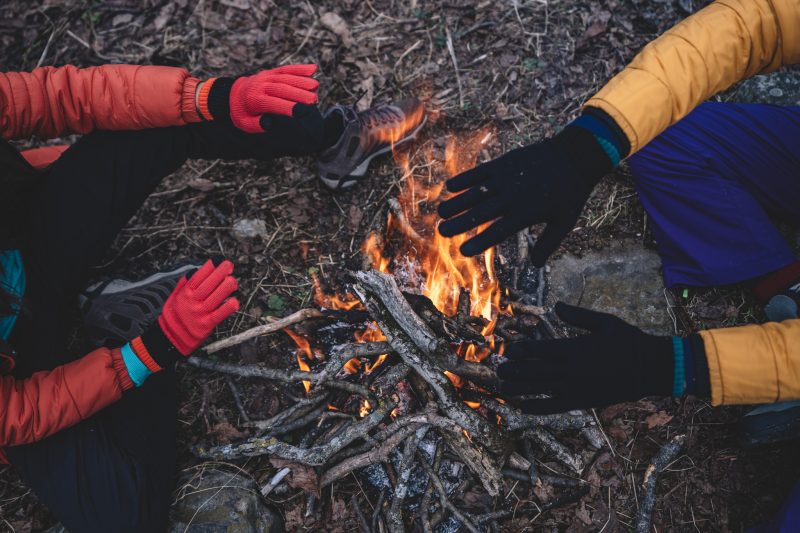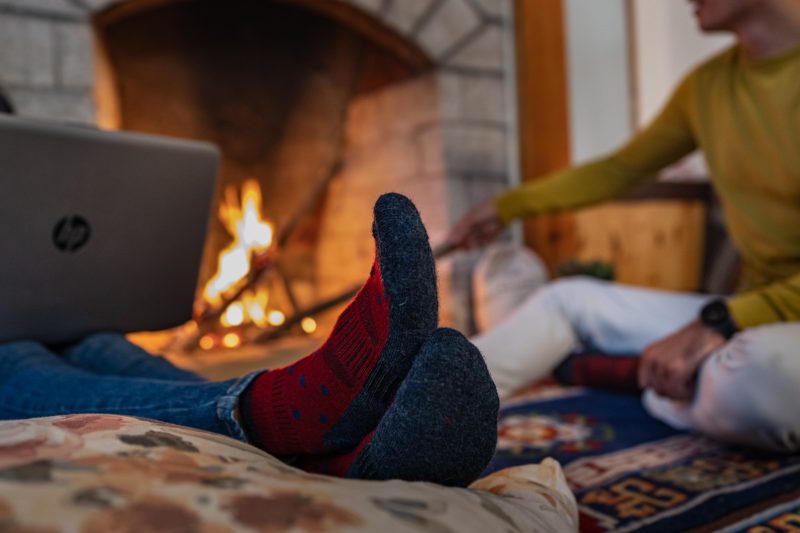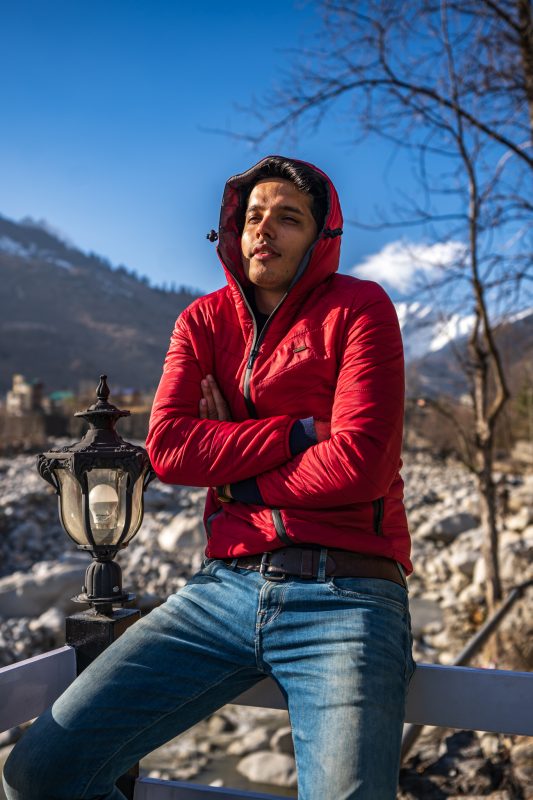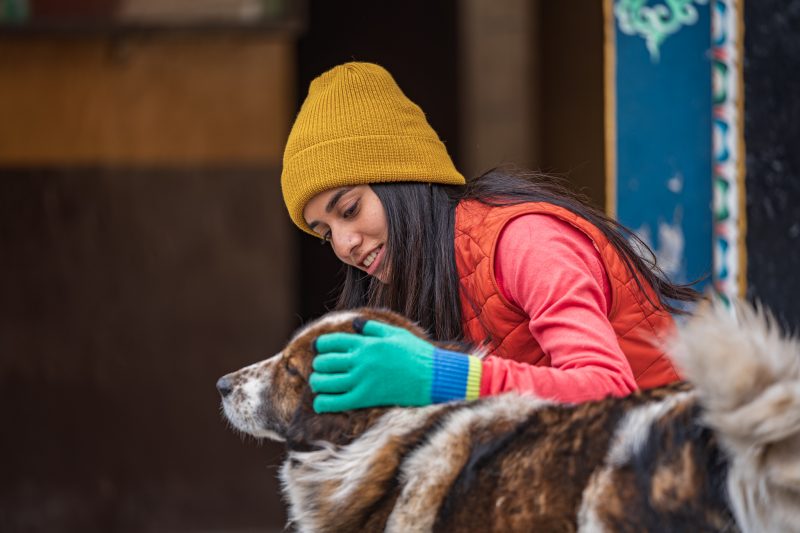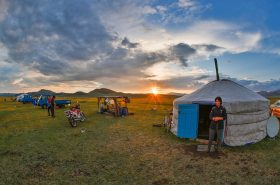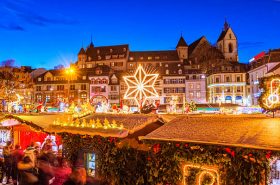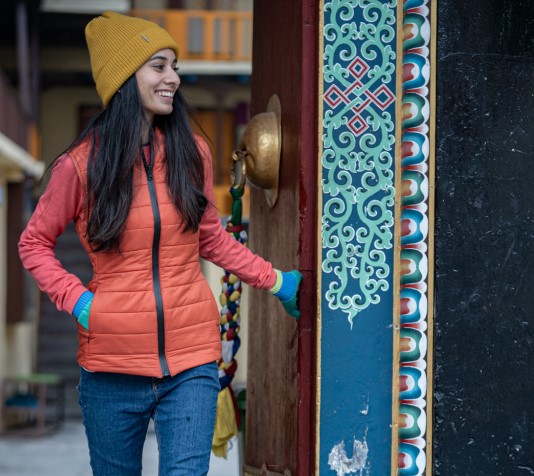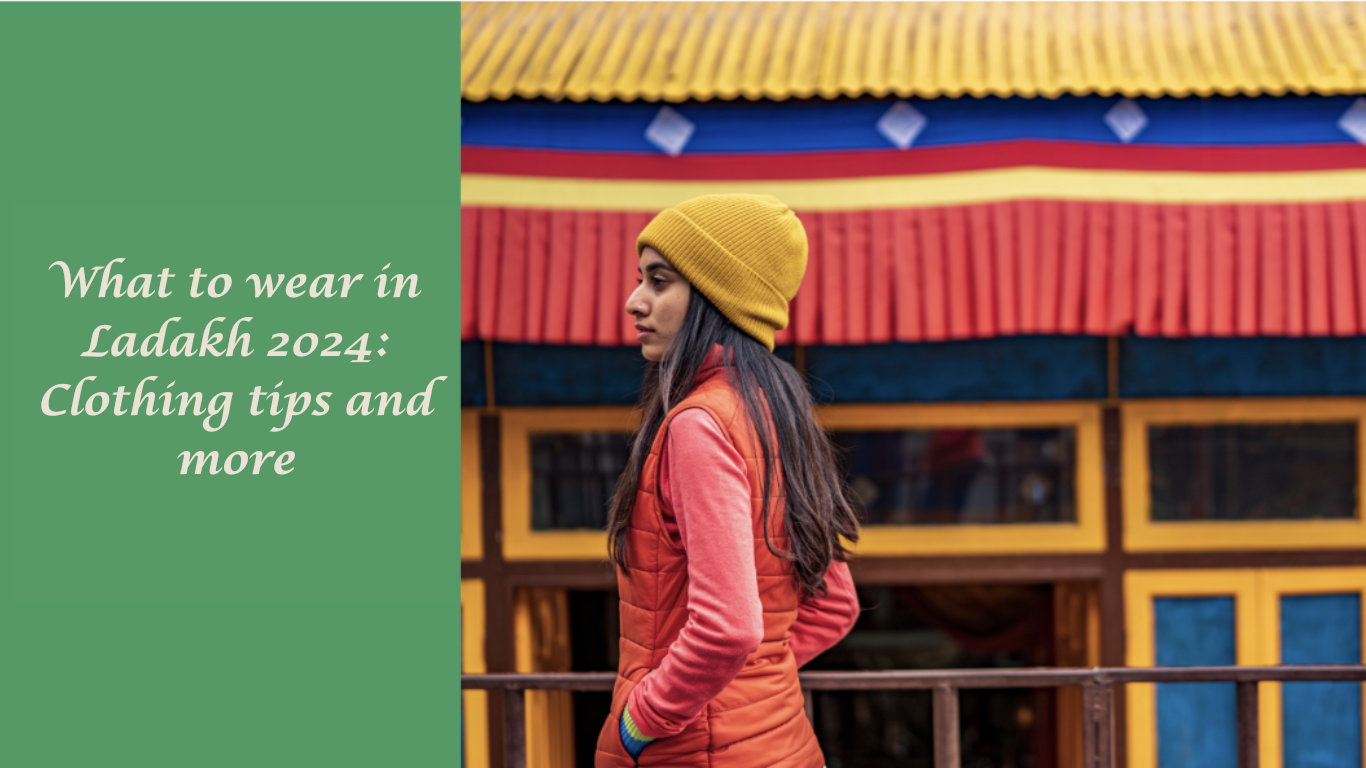
Wondering about what to wear in Ladakh? You’ve definitely made the right decision since we have exactly what you need and more.
In this travel guide, you’ll find all the information you tend to search for your trip including the most suitable Ladakh clothing to wear, the best time for a visit, the most sustainable ways to pack your bag, and more.
Keep reading to learn, explore and clarify any existing doubts in your mind.
Table of Contents
Where is Ladakh located?
Ladakh is located in the northern Indian state of Jammu and Kashmir. It’s also known as the “Land of High Passes”, a barren yet beautiful region that shares its east border with Tibet.
Ladakh also has Lahaul and Spiti to its south and the Kashmir valley to its west.
Ladakh was strategically placed on ancient trade routes, between the Kunlun Mountains in the north and the Himalayas in the South. The region originally comprised the Baltistan Valley, the Indus Valley, Zanskar, Lahaul, Spiti, and Aksai Chin.
As you just read, Ladakh is known as the “Land of High Passes”. One such popular and aesthetic location would be the Khardung La Pass; Let’s learn a little about this tourist spot in the following segment.
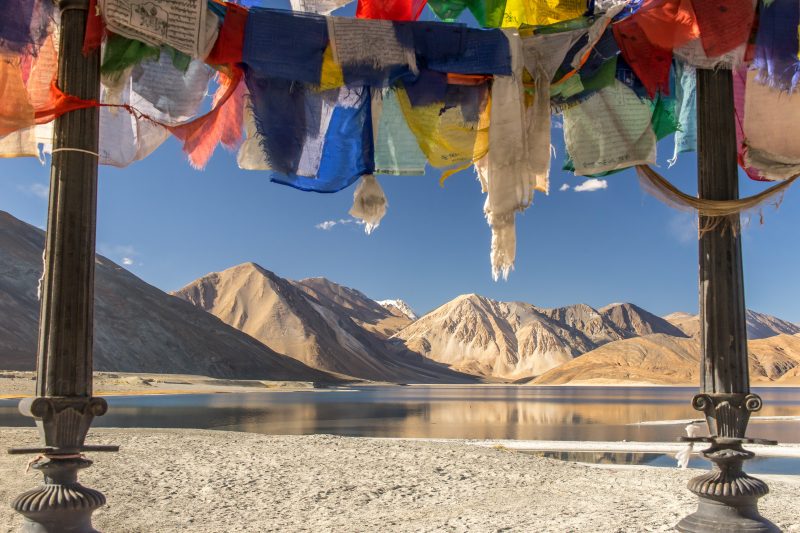
Ladakh’s beauty
Weather at Khardung La Pass
It’s a cold and windy place and also at a very high altitude (5,359 meters). Due to these factors, it’s covered in snow most of the time. Heavy snowfall is a staple here in the Khardung La Pass. It’s advisable to visit this place during the summer months.
The weather in summer is moderate with temperatures peaking at 20° C. But at night, the temperatures can reach a low of 6° C and sometimes even close to 0° C. During the spring season, the Khardungla pass is closed due to the incessant rainfall.
During winter, the temperature ranges in the negatives throughout the season. It becomes pretty tough due to the excruciating cold and the increased frequency of snowfall.
So if you’re visiting this pass, you must know what to wear in Ladakh at the time of your visit.
Things to See in Khardung La
The foremost tourist attraction in Khardung La is the excitement of traveling the highest motorable road itself. There are some spectacular views that greet you along the way. They include spotting Leh City & the surrounding mountain ranges.
You can take plenty of pictures and enjoy yummy noodles, momos, coffee, and tea in the cafe. There’s also a small souvenir shop where you can indulge in shopping.
Things to Remember While Visiting
Because of the high altitude, you’ll probably suffer from Altitude Mountain Sickness or AMS. It’s because of the extremely low oxygen & air pressure. Hence, it’s best not to spend more than 20 minutes there.
It’s better to acclimatize by staying 3-4 days in Leh before traveling to Khardung La Pass. You should carry medicines and plenty of water to avoid dehydration. Sunglasses and woolen clothing are a must at the Pass.
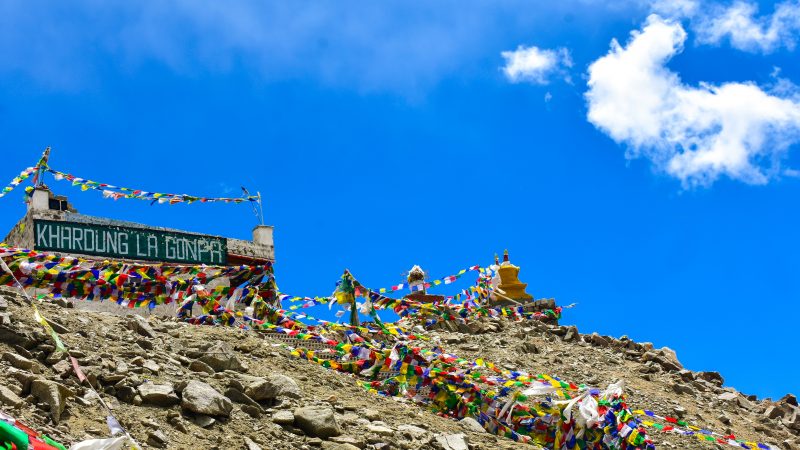
Khardung La Pass
Ladakh’s Seasons and Temperatures
Any time is supposed to be the best time to visit such a heavenly place like Ladakh.
Hence we have highlighted all the seasons below with their average temperature, their advantages, and disadvantages, and also including clothing options for your trip.
Summer Season in Ladakh (April-July): 15 °C to 30 °C
Can we go to Ladakh in April? The answer to this question is a definite yes. It may not be the best time to visit Ladakh but there are certain charms and benefits that the month of April can offer you.
Things will not be as crowded as they get in the later months, chances of finding budget accommodation will be higher and you will get to see plenty of snow all around.
During this period, the average temperature in Ladakh stays between 15 degrees to 30 degrees approximately.
So for these weather conditions and temperatures, you might not need so many layers of clothing on top of them although it completely differs for every person.
Monsoon Season in Ladakh (July-September): 3 °C to 17 °C
Monsoons in Ladakh are as rough and unexpected as winters, if not more. The air is crisp, with a blue and usually clear sky.
Beginning in July, monsoons in Ladakh do not last long, and whatever little rainfall the area receives is generally in the form of heavy but short-lived downpours.
The temperature at this point stays between 3 degrees to 17 degrees. Always think about what to wear in Ladakh during monsoon.
Winter Season in Ladakh (October-March): 0 °C to 15 °C
Winter is the most difficult time of the year in Ladakh. But they say that “with every difficulty, there comes a moment of happiness that you could cherish throughout your life”.
Hence winters in Ladakh feel like you are in a world of “Eutopia” and would never want it to end.
During this season Ladakh faces heavy snowfall which also makes Drass one of the coldest places in the world. Even though due to the heavy snowfall a lot of roads become inaccessible but Ladakh remains a go-to spot because of flight availability.
Due to such harsh weather conditions, one traveling during this time should carry sufficient or rather excess clothing just to be safe.
Winters in Ladakh can test your packing capabilities. So you must seek guidance before you set out to pack. You must always consider the temperature before you decide what to wear in Ladakh.
Clothing Recommendations by Season
What to Wear in Ladakh During Summer (May-August)
- 3-4 full-sleeve T-shirts (You’ll need them to avoid getting yourself tanned in the heat.
- 2 pairs of half-sleeve t-shirts and neck gaiters. If you’re going in for half-sleeve t-shirts, then ensure you carry summer sleeves for men and women.
- Comfy pair of track pants or joggers. 2-3 pairs should be fine for a week-long trip.
- 4-5 Pairs of Cotton Socks
- Undergarments. Check the clothes you’re packing and the duration of the trip. Pack your undergarments accordingly.
- 1 all-weather Jacket. This would come in handy when you visit the Khardungla Pass or go camping elsewhere.
- Pea cap to avoid the sun’s glaring heat.
- Toiletries
What to Wear in Ladakh During Monsoon (September – October)
- 3-4 quick-drying t-shirts
- 2-3 pairs of Sweatshirts and thermals
- Quick-drying joggers
- 4-5 Pairs of Woollen Socks
- Undergarments. Check the clothes you’re packing and the duration of the trip. Pack your undergarments accordingly.
- 1 all-weather Jacket. This would come in handy when you visit the Khardungla Pass or go camping elsewhere.
- Toiletries
What to Wear in Ladakh During Winter (November – April)
- You can carry along your entire summer kit mentioned above for a winter vacation too. But when you’re packing your socks, they should be woolen socks.
- Thermal tops and pants for men and women are a must for winter trips to Ladakh. They’re useful as the base layer in a layered winter outfit. Winter layering is essential in extreme winter temperatures.
- You’ll also need a sweatshirt/Merino wool pullover for a winter trip.
- Snow Pants & Waterproof Jackets are key especially if you’re travelling to the Khardungla pass.
- Accessories are also a must for your Ladakh trip. You can pack a few woolen beanies and gloves. If you’re going to play in the snow. Ensure that you have waterproof gloves on your hands.
Should you need appropriate winter gear, feel free to WhatsApp us at +919820999006.
Apart from this we also spoke to five adventure junkies who completed the Chadar trek in Ladakh. You can read about it here to grab some learnings and inspiration.
General Ladakh Packing Tips
We will read about what to wear in Ladakh in the following segment. But before that, you must know a few general packing tips. The necessities of a traveler include:
- Eatables
- Electronic gadgets and appliances
- Necessary travel documents
- Eatables – Dry Fruits
Trekking and hiking through the perfidious paths and routes in Ladakh can consume the maximum amount of energy in your body. To ensure minimum chances of physical constraints you need to keep your energy at a decent level.
Carrying dry fruits can help out with that, It’s always the best option. It hardly takes any space, doesn’t become stale easily, and can be consumed at any point in time.
- Camera and Batteries
Do you enjoy photography and capturing moments? Then don’t forget to carry your camera. Remember to keep one or two spare batteries along with you. Always keep an extra charger for your electronic devices.
A power bank becomes a crucial requirement, especially for people who have a habit of using their phones now and then.
If possible you should keep at least two power banks always fully charged because it will become hard to look out for charging ports in such deserted regions.
- Travel Documents
You would always need some essential documents for your travels wherever you may go. Here are some of the most common travel documents you might need:
- A government identity card such as Aadhar Card, Passport, Driver’s License, or Voter ID.
- Make sure that you carry both the original and the photocopied versions of every document you have.
- Other essential documents include a printout of the itinerary, a copy of flight tickets, medical insurance copy, a hotel reservation slip, and a passport-size photograph.
Specific Clothing Items to Pack
Ladakh is known for its high-altitude desert climate and cold temperatures, especially during the winter months. However, here are a few things that you might want to keep in mind when considering what to wear in Ladakh.
Tops: Shirts, sweaters, and jackets
- Base Layers: Lightweight, moisture-wicking long-sleeve shirts will serve as the foundation for your layering system. These are important to keep you dry and provide some insulation.
- Fleece Jackets or Sweaters: Fleece provides excellent warmth while remaining relatively lightweight. Pack a couple of fleece jackets or sweaters to use as mid-layers for added insulation.
- Insulated Down Jacket or Puffer Coat: An insulated down jacket is essential for extreme cold. It provides a high level of warmth and can be worn as an outer layer in milder conditions or as a mid-layer under a waterproof shell in harsh weather.
- Windproof/Waterproof Jacket: A windproof and waterproof jacket with good insulation is crucial to protect you from cold winds and occasional rain or snowfall. Look for a jacket with a hood for extra protection.
Bottoms: Pants, thermal leggings
- Warm Pants: Pack a couple of pairs of warm pants, such as wool or fleece-lined trousers. These will serve as your primary bottom layer for insulation.
- Thermal Leggings or Long Underwear: Thermal leggings or long underwear are essential for layering. They provide additional insulation for your legs and can be worn under your warm pants.
- Waterproof Pants or Snow Pants: If you’re planning to engage in outdoor activities like trekking or encountering snow, waterproof pants or snow pants will protect against wet conditions.
Outerwear: Warm coats, windproof jackets
- Insulated Down Jacket or Puffer Coat: An insulated down jacket or puffer coat is a must-have for extremely cold conditions. It provides exceptional warmth while remaining lightweight and compressible. This jacket can serve as your outermost layer in milder conditions or as a mid-layer under a waterproof shell during harsh weather.
- Windproof and Waterproof Jacket: A high-quality windproof and waterproof jacket is essential to shield you from cold winds and occasional rain or snowfall. Look for a jacket with sealed seams and adjustable cuffs to keep moisture out. A hood is also important for added protection.
Accessories: Hats, gloves, scarves, socks
- Warm Hats or Beanies: A warm hat or beanie is crucial for retaining heat and keeping your head and ears warm in cold temperatures.
- Insulated Gloves or Mittens: Insulated gloves or mittens are essential to protect your hands from the cold. Look for options that are waterproof or water-resistant for added protection in wet conditions.
- Scarves or Neck Gaiters: Scarves or neck gaiters can shield your neck and face from cold winds and provide extra warmth. They can also be pulled up to cover your mouth and nose in extremely cold conditions.
- Woolen Socks: High-quality woolen socks are excellent for keeping your feet warm and comfortable. Pack multiple pairs for your trip.
Footwear Choices
Choosing the right footwear for Ladakh’s terrain and weather conditions is crucial for your comfort and safety. It is essential due to the unique terrain, altitude, and weather conditions of the region.
Ladakh experiences extreme temperature variations between day and night. Having the right footwear with proper insulation will help keep your feet warm during colder periods and allow them to breathe when temperatures rise. Here are some footwear options to consider packing for your trip to Ladakh.
Footwear suitable for Ladakh’s terrain and weather conditions
- Sturdy Waterproof Boots: A pair of sturdy, waterproof hiking boots with good ankle support is essential for Ladakh’s rugged terrain and potential wet conditions. Look for boots with a durable sole that provides good traction. These are especially important if you plan to go trekking or hiking.
- Insulated Winter Boots: For colder months or if you’re visiting during winter, insulated winter boots with a thick lining will keep your feet warm and protected from the cold and snow.
- Hiking Shoes or Trail Runners: If you’re not planning extensive trekking and prefer a lighter option, hiking shoes or trail runners with a good grip can be suitable for shorter hikes and walks.
- Woolen Socks: Bring a selection of warm, moisture-wicking woolen socks to keep your feet warm and dry. Consider packing multiple pairs.
Some More Must-Haves
You know now what to wear in Ladakh but along with those items, some are completely non-negotiables. So do make a note of these items too. They should be in your luggage along with the other clothes and things you carry:
- Sunscreen: Well, as I mentioned, you need to protect yourself from the glaring heat. Of course, you wouldn’t want to get tanned on the holiday.
- Lip Balm: This would be very useful, especially during the winter season. That’s often the time when the lips begin to get dry. In such cases, you need to apply the balm and keep them moist.
- Pro tip: Chavanprash helps you deal with the changing temperatures and also boosts your immunity.
Acclimatization in Ladakh
Acclimatization is an essential aspect to prepare for while planning a trip to Ladakh. Leh and most of the places in Ladakh are located above an altitude of 10,000 feet.
The best thing about going to Ladakh is savoring the breathtaking views. But there are some issues that travelers face due to such high altitude.
They might complain of vomiting, dizziness, less amount of oxygen, etc. One of the major concerns could be AMS (Acute Mountain Sickness).
These problems don’t allow them to enjoy themselves to the fullest. Some people can deal with them efficiently while others suffer.
Hence, acclimatization becomes even more important in these cases. One of the best ways to acclimatize would be to do nothing for the first 24 hours post-arrival.
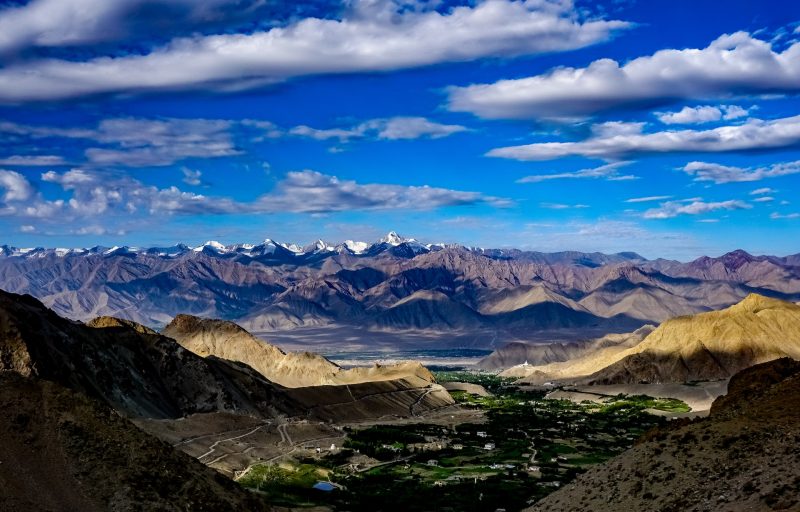
Leh Ladakh
Also, remember to maintain a slow pace while walking around. And please don’t forget to keep yourself hydrated at all times.
Sickness during a Ladakh trip is pretty common if one flies or drives to such a higher altitude directly. You will come across quite extreme conditions and might bear the consequences.
With the increase in altitude, things can get serious. Therefore, before setting foot out of your house to go to Ladakh, you should know how to keep yourself healthy and safe. Here are some precautions you can follow:
- Get a physical checkup done to make sure you don’t have any serious health issues.
- If you have a blood pressure problem, consult your doctor before planning the trip.
- Rest well for at least 48 hours.
- Review the symptoms so you can recognize and treat them quickly.
- Maintain proper hydration levels in your body. Drink water frequently. You can also mix it with electrolytes and glucose for extra energy.
- Avoid over-exertion.
- Ascend slowly.
- Avoid anti-depressants and alcohol.
- Avoid overeating.
- Don’t spend too much time at high-altitude passes.
Activities to Enjoy in Ladakh
View this post on Instagram
If you’re traveling to Ladakh, you must visit Leh, the capital city. There are many exciting places to visit in Leh itself. You can have a look at this first and then read further about the activities to enjoy in Ladakh. Accordingly, you can also consider what to wear in Ladakh.
Trekking
One of the oldest and most sought activities, especially in places like Ladakh is trekking. It never disappoints you with unexpected adventures, walking through the most beautiful roads, no matter what circumstances might come up.
The chilly breeze blessing your face, your sudden pangs to rub your hands over the snow covering every rock you lay your eyes on.
Trekking will always be the first suggestion that a traveler would suggest to you when you plan to visit Ladakh. Two of these treks are the Chadar Trek.
Here you cross the frozen Zanskar River and the Stok Kangri Trek which offers incredible views of the Indus and the Zanskar valleys.
Camping
Just imagine those daydreams you always fantasized about in which you build your camp under a star-lit sky with the ultimate level of quietness and peace which is completely non-existent in the city.
Well, guess what Ladakh has you covered in that regard!
There are numerous camping spots in this Eutopic wonderland where you could easily set up your camp and live up to the aesthetic dreams you once wanted to fulfill.
You can also play some rock hits in the background, setting the perfect mood for the night.
Typically, there are two kinds of camping that you could be a part of:
Leisure camping and adventure camping.
Leisure camping can be immensely enjoyed at one of the most beautiful and unreal places like the place along Tso Moriri and the Pangong Tso, in the beautiful Hunder Village of Nubra Valley, and places around Leh.
Whereas, adventure camping has better reach and vastness in Ladakh.
Adventure camping lets you choose places that are comparatively lesser-known but of your choice which would also deliver the best sceneries and come as a blessing to the eye.
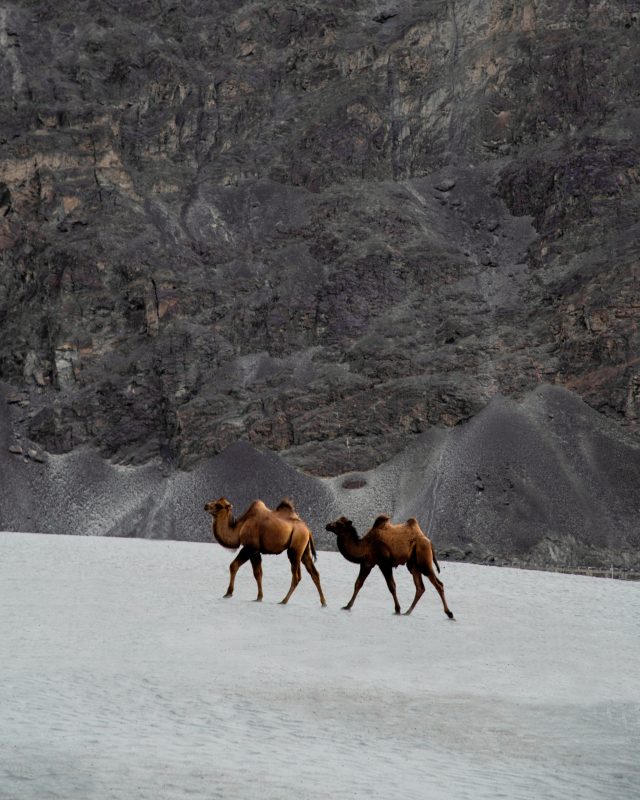
Leh Ladakh
Mountain Biking
Ladakh would give you a real opportunity to test if the bicycles are MTBs (Mountain Bikes) or not. After all, they claim themselves to be.
Recently on social media, videos of cyclists covering huge distances on Ladakh roads have been seen very frequently, which shows that this sport has become pretty well desired and popular among travelers and tourists.
Ladakh is like the “Mecca” for mountain bikers. Cycling in Ladakh would mean letting yourself through the meandering roads paving their way towards some awestruck scenery which is worth dying for.
Mountain biking means riding through the never-ending trails that pass by the fast-rushing Indus and Zanskar Rivers or to some high mountain passes like Khardung La.
Mountain biking in Ladakh helps you to get a better taste and knowledge of the culture and traditions of various regions respectively.
This activity would allow you to explore the beauty from a closer angle and also witness the extreme depth of art, culture, and traditional values existing in the people of Ladakh.
Peak Climbing
Nestled between the Himalayas, Zanskar, and the Karakoram Ranges, Ladakh has become a paradise for so many different sports.
For mountaineers and climbers, Ladakh is the ultimate destination for the maximum adrenaline rush they could ever dream of.
With seven thousand and six thousand, the challenges keep increasing and the thrill never dies for the climbers. Every peak has its beauty and surprises for fellow visitors.
Amongst the most popular peaks in Ladakh are:
Stok Kangri (6,150m) in Zanskar Range
Nun (7,135m) and Kun (7,077m) in the Himalayan Range
Saser-I (7,415m) and Saser-II (7,513m) and Saser-III (7,495m) in Karakoram Range.
River Rafting
Most of the time the rivers are generally frozen because of the extreme freezing temperatures in the region. Hence, the summer only lets you look at the purity of the water bodies situated in Ladakh.
It’s human nature that anything beautiful should be felt to the optimum level. So for that reason, there are many river rafting clubs, organizations, businesses, and also freelancing individuals catering to this activity to you.
It allows you to have the closest experience of the extreme cleanliness and purity of the water present in the various rivers.
A trip to Ladakh is incomplete if there’s even a bit of sacrifice in adventure. The best places to enjoy this extremely nerve-racking experience are in the two most popular rivers, Indus and Zanskar which have recorded rapid grades ranging between 1-to 5.
This versatility in the range ensures that not only can an experienced person enjoy the thrill and live their wild adventurous dreams, but even beginners can fulfill the same without any compromises.
And I don’t think that I have to mention the perks of having the best views of barren lands and lofty villages visible straight from the river that makes you remember these images till your last breath.
Horse Riding
Ladakh never gets tired of giving innumerable surprises to all its visitors. Horse riding is one of the activities that lift the level of adventure and thrill massively.
Travelers get a once-in-a-lifetime opportunity to explore the rugged regions of Ladakh consisting of both the paved and unpaved routes by just sitting on the back of a horse and enjoying the experience that is priceless in all senses.
Keeping the landscape aside, the other famous spots you could cover on a horse are
- Zongkhul Gompa
- Stongdey Monastery
- Penzila Pass
They’re all located near Zanskar.
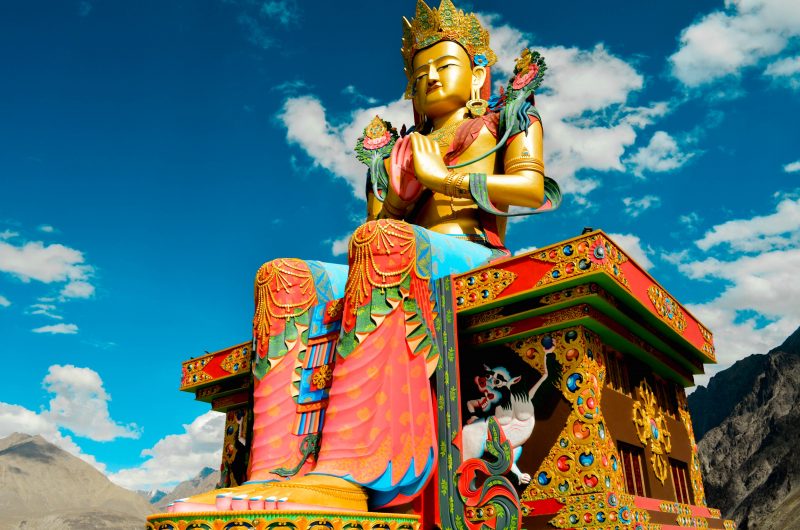
Buddha in Ladakh
Festivals
Numerous traditional festivals are present and celebrated throughout the year in Ladakh India. People are very passionate and highly diligent when it’s to their festivals and traditional practices and rituals.
One such festival is the Losar Festival. It’s celebrated in December. Losar has its roots and origins in the 7th century, being one of the biggest festivals in Ladakh.
Losar marks the arrival of a New Year in Tibetan Buddhism. The festival goes on for 15 days and during these days the ancestors, animals, and Gods are fed. Changkol, or Tibetan Bear, is consumed by the people during Losar.
Monsoon is the time of many mesmerizing festivals such as Karsha Gustor which is held at Karsha, Zanskar Valley’s biggest monastery.
There’s also the Phyang Tsedup, the annual festival, organized at the Phyang monastery. And there’s the Korzok Gustor, which is held at Korzok monastery, located near Moriri Lake.
FAQs
You must have a lot of questions regarding Leh Ladakh. Well, here are some frequently asked questions to help you through:
What should I wear on a Ladakh trip?
Leh Ladakh may be cool even in the summer, particularly in the early morning and late evening. To stay warm, bring along warm sweaters, fleece jackets, and insulated jackets filled with down or artificial insulation. Headgear is essential for shielding your head from the piercing sun and chilly gusts.
What kind of pants should I wear in Ladakh?
It’s important to have snow pants and a waterproof jacket, especially if you’re going to the Khardungla pass. Accessories are also essential for your journey to Ladakh. You can bring some woolen gloves and beanies.
Which month is best for Ladakh?
The best time to visit Ladakh is from April to July during the summer months when the temperature ranges from 15 to 30 degrees Celsius. Nearly the entire year, Ladakh is renowned for its exceptionally low temperatures.
Which month Ladakh has snowfall?
Ladakh experiences unusually cold weather in January and February, with lows well below freezing. These months experience persistent, heavy snowfall, which causes temperatures to drop below freezing.
How can we protect our skin in Ladakh?
Ladakh’s intense heat will undoubtedly cause you to develop a tan. Carry a sunscreen lotion with the highest SPF on you to protect your skin from harmful UV rays. Additionally, pack sunglasses because caring for your eyes is just as important as protecting your skin from the sun.
Conclusion
In conclusion, packing the right clothing for your trip to Ladakh is crucial for staying comfortable, safe, and prepared in its high-altitude climate. Well, it’s always good to be over-prepared than underprepared. You must have received this advice from many people about traveling. There is some truth in the statement.
When deciding what to wear in Ladakh, consider layering your clothing to adapt to changing weather conditions, and prioritize items that provide warmth, protection from the elements, and comfort. Pay attention to the specific season of your visit and the activities you plan to engage in. By being well-prepared and dressing appropriately, you’ll be able to fully enjoy Ladakh’s breathtaking landscapes and unique cultural experiences.
By now, I hope you’ve gotten a fair idea about what to wear in Ladakh and how to prepare for the trip in general. You can also visit the Kosha website or store for a lot of options of winter clothing that will help you prepare for your Ladakh trip.
Hope this post would be of some help when you plan your next Ladakh trip.



